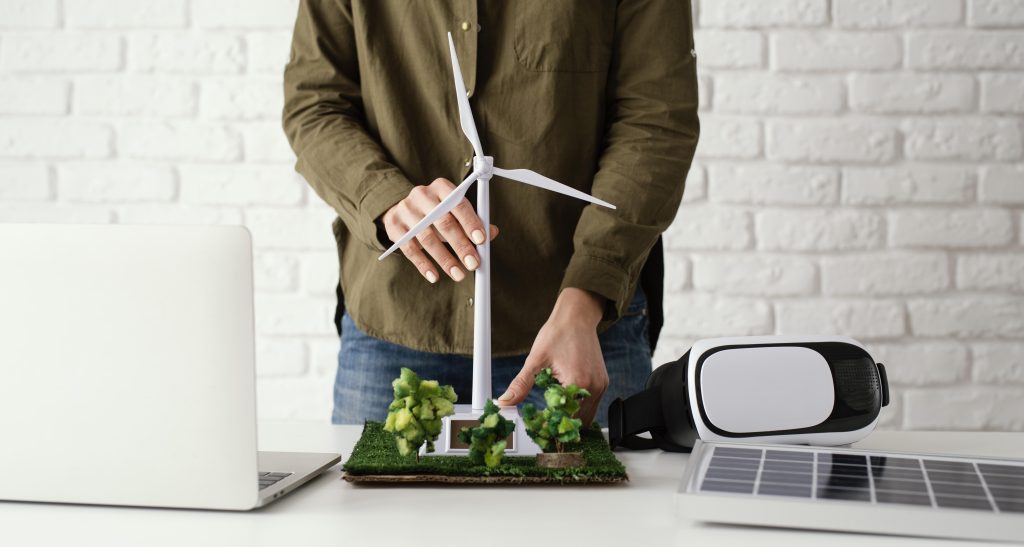How Investing in Green Technology Helps Build a Better Future
Aiden Foster August 13, 2025
In today’s fast-paced world, sustainability has become a critical concern, and green technology is emerging as a key player in the global effort to combat climate change. From renewable energy to electric vehicles (EVs), green technologies are not only transforming industries but also paving the way for a more sustainable future. Governments, businesses, and consumers are all embracing green technology as a way to reduce environmental impacts and ensure that future generations inherit a planet that can thrive. But how does investing in green technology help build a better future? This article explores how green technology is driving sustainability, economic growth, and innovation.

The Rise of Green Technology: What is It?
Green technology, also known as clean technology, refers to innovations that contribute to the protection and preservation of the environment. It includes renewable energy sources like solar and wind power, energy-efficient products, sustainable agricultural practices, and even clean transportation solutions. Green tech aims to reduce humanity’s carbon footprint, minimize waste, and promote the sustainable use of resources.
Over the past few years, green technology has shifted from being a niche sector to becoming a global movement that influences nearly every industry. With the increasing need to tackle climate change and reduce reliance on fossil fuels, investments in green technologies have surged, and the impact on the economy, job creation, and environmental health is becoming more evident.
Key Green Technology Trends Shaping the Future
Renewable Energy Solutions
The shift from fossil fuels to renewable energy sources like solar, wind, hydro, and geothermal drives green technology. Over the past decade, the cost of renewable energy has fallen significantly, making it more accessible. The cost of solar panels has dropped by over 80%, making solar energy more affordable for homeowners and businesses. Wind turbines, especially offshore farms, are playing a crucial role in reducing carbon emissions and providing cost-effective energy. Energy storage solutions like lithium-ion batteries ensure that renewable energy is available when the sun isn’t shining or the wind isn’t blowing.
Electric Vehicles (EVs)
The transportation sector, a major contributor to carbon emissions, is being transformed by electric vehicles (EVs). EVs are more energy-efficient and help reduce pollution. Advancements in battery technology, especially lithium-ion batteries, have made EVs more affordable and practical. Companies like Tesla and Rivian continue to push the limits of battery range, charging time, and cost. Governments around the world are encouraging EV adoption with incentives such as tax credits and developing charging infrastructure.
Energy Efficiency and Smart Buildings
Green technologies are revolutionizing energy use in buildings. Smart grids monitor and manage energy distribution, improving efficiency and integrating renewable sources. Energy-efficient LED lighting and smart thermostats, such as those from Nest, help reduce energy consumption in homes and offices, making buildings more sustainable without sacrificing comfort.
Sustainable Agriculture and Food Technology
Agriculture’s environmental impact is being mitigated by green technology. Vertical farming, which uses stacked layers to grow crops indoors, reduces the need for land and water. Plant-based and lab-grown meats offer a sustainable alternative to traditional livestock farming, reducing greenhouse gas emissions and the strain on resources like water and land.
These innovations demonstrate how green technology is transforming industries and contributing to a more sustainable future.
Why Investing in Green Technology Matters
1. Environmental Benefits
The most obvious benefit of green technology is its contribution to environmental preservation. By reducing reliance on fossil fuels, minimizing waste, and promoting sustainable resource use, green technologies help mitigate the effects of climate change, reduce pollution, and protect ecosystems. Renewable energy, for instance, has a minimal environmental impact compared to coal or natural gas, and it doesn’t contribute to air pollution or greenhouse gas emissions.
2. Economic Growth and Job Creation
Green technologies are driving economic growth in new industries, creating jobs, and attracting significant investments. According to the International Renewable Energy Agency (IRENA), the renewable energy sector alone employs millions of people worldwide. As the demand for clean energy, energy-efficient technologies, and sustainable products grows, so will the need for skilled workers in these fields. Additionally, businesses that adopt green technologies often see cost savings in the long run, whether through reduced energy costs, government incentives, or improved brand reputation.
3. Energy Independence
Investing in green technology allows countries to reduce their dependence on foreign energy sources, which can be subject to price volatility and political instability. Renewable energy sources, such as solar and wind, are locally sourced, meaning countries can generate their own energy and create a more resilient and self-sufficient energy grid. This also helps reduce the need for costly energy imports, which can improve national security and strengthen local economies.
4. Long-Term Sustainability
The future of our planet depends on the technologies we develop today. By investing in green technologies now, we are ensuring that future generations will have access to the resources and infrastructure they need to thrive. Whether through clean energy, sustainable agriculture, or green transportation, green technology is an essential part of building a world that can sustain both human life and the natural environment.
Challenges and Opportunities Ahead
Despite the progress, challenges remain. High upfront costs, regulatory barriers, and technological limitations can slow down the adoption of green technologies. However, these challenges also present opportunities for innovation, collaboration, and investment. As technology improves and economies of scale are achieved, the cost of green technologies will continue to fall, making them more accessible to a broader range of consumers and businesses.
Conclusion
Investing in green technology is crucial for building a sustainable and prosperous future. The environmental, economic, and societal benefits are clear: green technologies reduce carbon emissions, create jobs, improve energy efficiency, and promote long-term sustainability. As technology continues to evolve, the role of green tech in shaping our future will only become more important. By supporting and investing in these innovations, we are not only addressing the challenges of today but also laying the groundwork for a cleaner, greener tomorrow.
References
- International Energy Agency (IEA). (2024). Renewable energy market update: Outlook for 2024 and 2025. Available at: https://www.iea.org (Accessed: 13 August 2025).
- United Nations. (2023). The role of green technologies in achieving the SDGs. United Nations Development Programme. Available at: https://www.undp.org (Accessed: 13 August 2025).
- McKinsey & Company. (2023). The economic impact of green technologies: Trends and opportunities. McKinsey & Company. Available at: https://www.mckinsey.com (Accessed: 13 August 2025).







